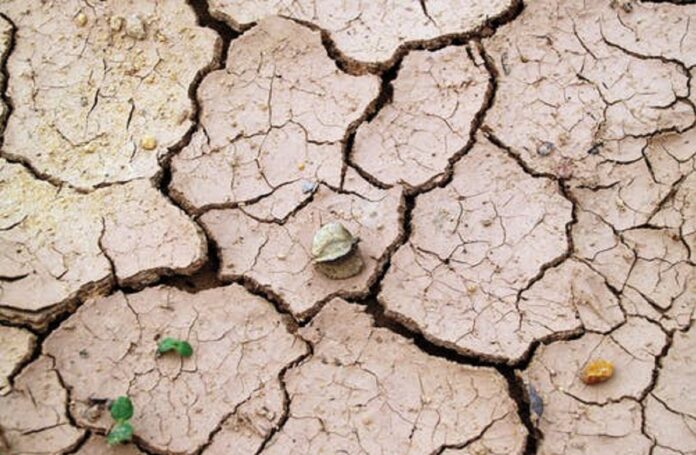Soil problems are a significant cause of low production levels in many cropping ventures.
Farmers with little or no knowledge of the basic soil problems, apply ineffective remedies, raising the cost of production without any resultant benefits in both the short and long term, to the farmer. The post presents the fundamental soil problems and the simple and most effective ways of an amendment.
1. Soil lacking organic matter
Correction: Add compost
Common to soils that have been continually farmed using less-sustainable methods.
Soil without organic matter may have poor water retention, drainage issues, little to no organism activity, and failing crops, among others. This condition makes it almost impossible to crop on such soils.
You can remedy this by incorporating compost into the soil. Spread a 3-inch-deep compost layer and incorporate it into 3 to 6 inches of soil. You should apply fully decomposed compost to prevent the decomposition process from depriving crops of certain nutrients. You can also grow cover crops during fallow periods to encourage soil biota activity. Moreover, you can practice crop rotation and conservation agriculture. Do not till wet soil to avoid compaction.
Read also: 10 Simple and Easy Soil Tests
2. Soil too dry
Correction: Add compost
This, as one of the basic soil problems, is common to sandy soils. If your soil dries out too quickly, you can add compost. This will add both nutrients and increase the water retention capacity of the soil. I recommend applying mature compost. Compost that is not fully decomposed may harm your plants as it continues to break down. You can practice no-till under conservation agriculture. This will also help to improve water retention and reduce water loss by evaporation. No-till agricultural technology also improves your soil’s structure in the long term.
Read also: How to Prepare Biochar – The Wonder Material For Crops and Soils
3. Soil too wet
Correction: Add compost, sand, pea gravel
This condition is common in low-lying areas, clay soils, and areas with a high water table.
This is usually caused by the compact nature of soil particles, which do not allow good drainage of water. You can amend this by incorporating sand or gravel into the soil. The addition of sand or gravel will also require that you add organic materials to address soil nutrient problems. Avoid adding sand to clay soils. This mixture can be set up like concrete. It is recommended that clay soils be amended with approximately 0.8 cubic meters of gravel or compost per 100 square feet. However, the rate for non-clay soils may vary depending on the choice of the amendment and the soil type.
Additionally, you may also dig around crop areas to allow the water to drain from the crop areas. Again, practice no-till on such soils.
Read also: Soil Conservation: How to maintain Soil for Sustainable Crop Production
4. Soil acidic
Correction: Add dolomitic lime, wood ash
Common to areas of high rainfall, poor drainage, heavy nitrogen fertilizer use, and high evergreen-tree population.
Many farmers use lime to address the issue of soils with low pH (acidic soils). In an already established area, lime can be incorporated by rainfall or irrigation. The application rates may vary depending on the soil’s pH and soil type. The advice of the soil-testing expert may be required. Wood ash should be applied more cautiously as an excess of it can raise the potassium level in the soil and prevent plants from absorbing other nutrients. It is recommended that you use not more than approximately 1kg per 9 square meters.
Moreover, you can grow acidic-soils-tolerant crops like potatoes and sweet potatoes.
Read also: What is Soil Tillage, Types of Soil Tillage and the Effects on Soil and Crops?
5. Soil alkaline
Correction: Add Elemental sulphur, iron sulphate
Common to clay soils, arid and semi-arid climates.
For soils with high pH from soil test results, apply elemental sulphur and iron sulphate. The rate of application depends on the type of soil and you may need the recommendation of a soil-testing expert. Apply the elemental sulphur about a year before planting because the elemental sulphur reacts slowly with the soil.
Alkaline soils require continual buffering, so you must monitor soil pH each year and apply the necessary amendment. For perpetual alkaline soils, you can also grow crops that are tolerant to high pH.
Read also: Benefits of Earthworm to your Soil
6. Soil with excess salinity (salt content) or sodicity (sodium content)
Correction: Add elemental sulphur, gypsum (calcium sulphate).
Common to arid and semi-arid climates, low-lying areas near saltwater.
If you confirm that your soil has excess salinity after soil testing, you can apply gypsum and elemental sulphur. The rates of application for gypsum and elemental sulphur may vary depending on the type of soil. The rates of application, therefore, must be recommended by the soil testing expert. Be careful not to apply gypsum to sandy or acidic soils. This can cause mineral deficiencies in plants.
Apply the elemental sulphur about a year before planting because the elemental sulphur reacts slowly with the soil.
Poor drainage may also be a cause of sodic and saline soils. In this case, you may apply compost, sand, or gravel as in soils that are too wet. Drain off the water that is logging.
Soil Problems Post inspiration: hobbyfarms.com
Featured Image source: Pexels


